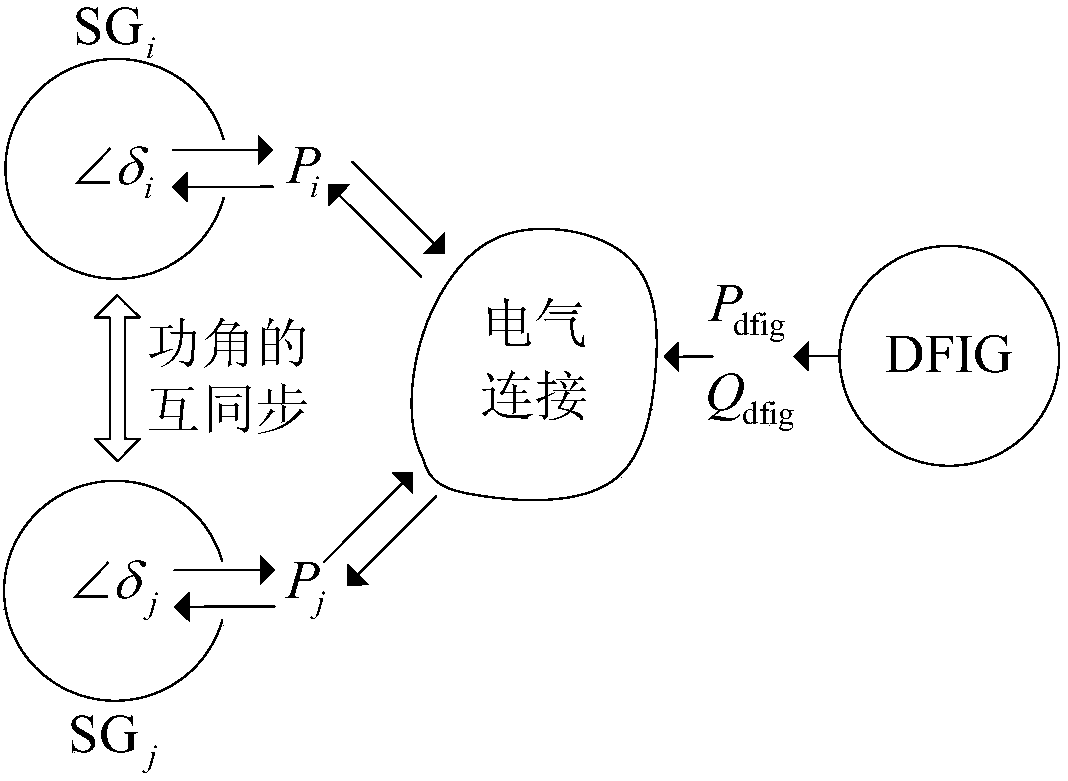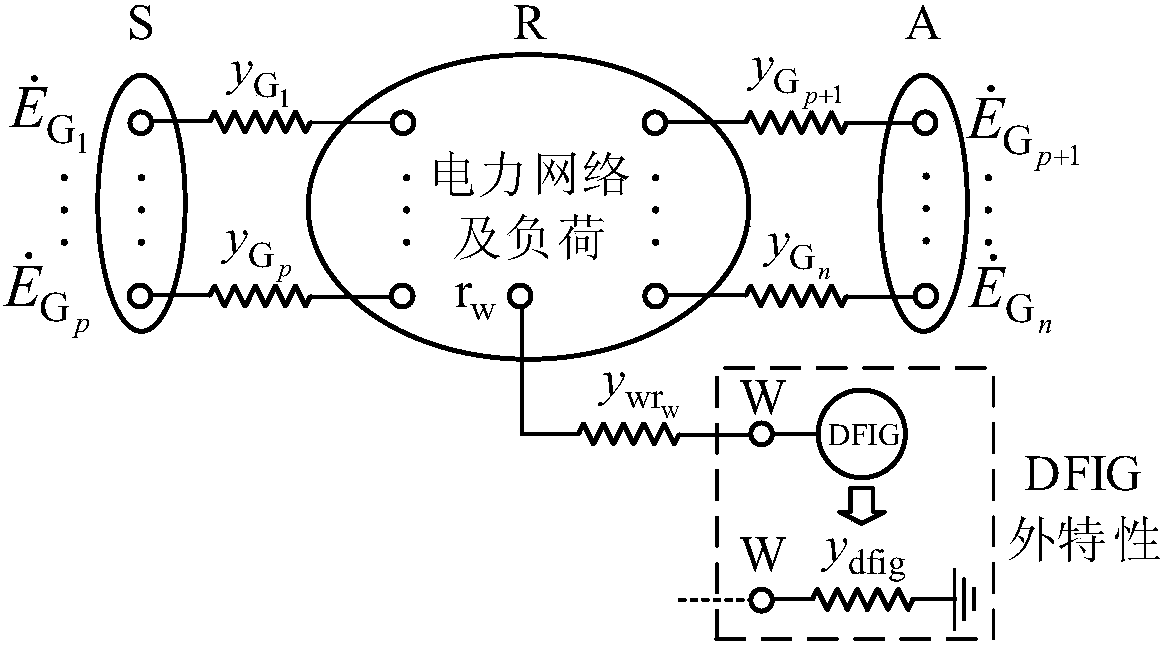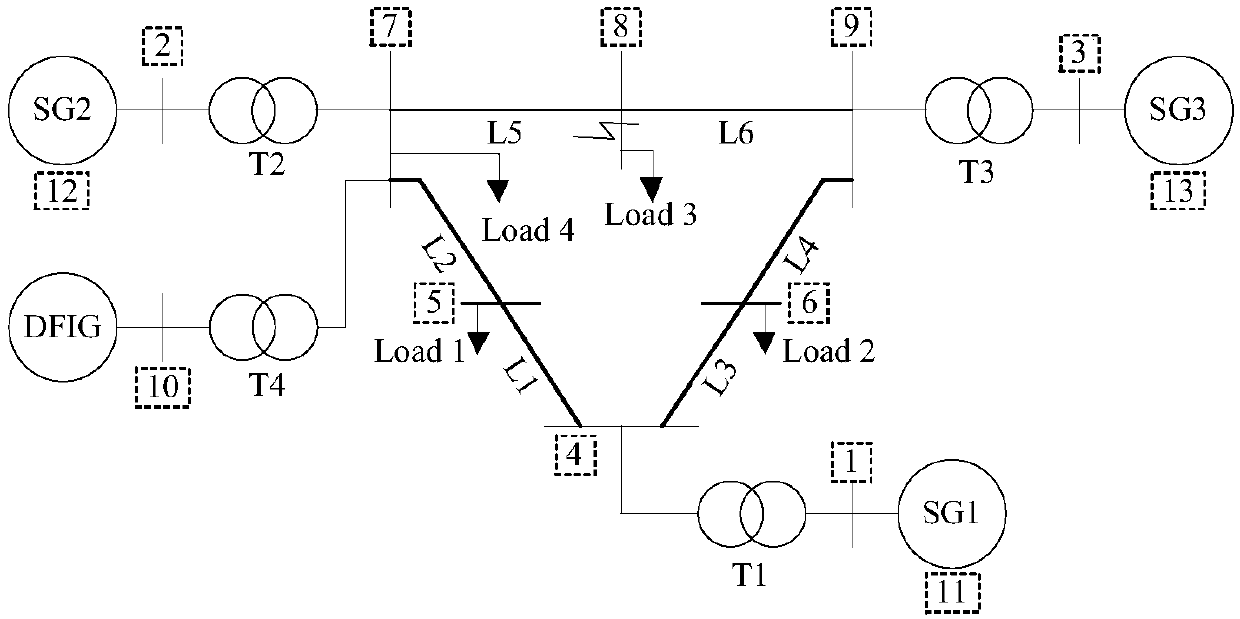Transient state power angle stability analysis method for wind power plant-containing multi-machine system
A transient stability, multi-machine system technology, applied in wind power generation, electrical components, circuit devices, etc., can solve the problem that the influence of wind turbines is not fully considered, the transient response changes of DFIG are not considered, and the stability of synchronous machines cannot be truly reflected. And other issues
- Summary
- Abstract
- Description
- Claims
- Application Information
AI Technical Summary
Problems solved by technology
Method used
Image
Examples
Embodiment 1
[0056] An embodiment of the present invention provides a method for analyzing transient power angle stability of a multi-machine system including a wind farm. Starting from the influence of wind farm access on synchronous machines in a multi-machine system, the equivalent grounding admittance is used to reflect the external power characteristics of the wind farm, and it is proposed to incorporate the active and reactive power information of the wind farm contained in the grounding admittance into the synchronous Based on the ideas in the admittance matrix of machine nodes, the influence of the wind farm on the power angle mutual synchrony between synchronous machines is converted into the mutual admittance and self-admittance between synchronous machines, as well as the change of output power, so that theoretically Quantitatively analyze the change of relative power angle between synchronous machines, and the influence of wind farm on the transient power angle stability of the ...
Embodiment 2
[0070] The scheme in embodiment 1 is further introduced below in conjunction with specific calculation formulas and examples, see the following description for details:
[0071] 201: Theoretical analysis of the influence principle of the connection of DFIG on the mutual synchronization and stability of the synchronous machine power angle, and the external output power characteristics of the doubly-fed fan are reflected by the parallel ground admittance; the wind farm composed of DFIG is equivalent to a DFIG for analysis. Different from the synchronous machine, DFIG relies on the double converter structure and vector control to make the connection between the mechanical part and the electrical part similar to decoupling. It does not have power angle characteristics and does not have the electromechanical transient process in the traditional sense. Therefore, the impact of wind farm access on the transient power angle stability of multi-machine systems cannot be directly analyze...
Embodiment 3
[0118] Combined with the specific calculation formula, Figure 3-Figure 9 The scheme in embodiment 1 and 2 is carried out feasibility verification, see the following description for details:
[0119] image 3 It is a three-machine system including DFIG. The rated capacities of the synchronous machines SG1, SG2 and SG3 are 247.5MW, 192MW and 128MW respectively, and the rated power of DFIG is 75MW; the three-phase symmetrical fault is set at node 8, which lasts from 0.2s to 0.5s; the loads all adopt the constant impedance model. In this calculation example, SG2 and SG3 belong to the advanced group S, SG1 belongs to the remaining group A, and the grid-connected position of DFIG is close to the S group. The mutual synchronicity and system transient stability of the synchronous machines are compared under the stator series reactance ride-through scheme (referred to as scheme A) and the rotor crowbar ride-through scheme (referred to as scheme B) respectively in DFIG.
[0120] rig...
PUM
 Login to View More
Login to View More Abstract
Description
Claims
Application Information
 Login to View More
Login to View More - R&D
- Intellectual Property
- Life Sciences
- Materials
- Tech Scout
- Unparalleled Data Quality
- Higher Quality Content
- 60% Fewer Hallucinations
Browse by: Latest US Patents, China's latest patents, Technical Efficacy Thesaurus, Application Domain, Technology Topic, Popular Technical Reports.
© 2025 PatSnap. All rights reserved.Legal|Privacy policy|Modern Slavery Act Transparency Statement|Sitemap|About US| Contact US: help@patsnap.com



